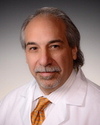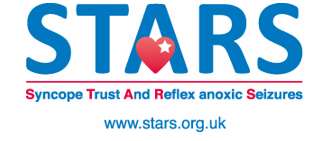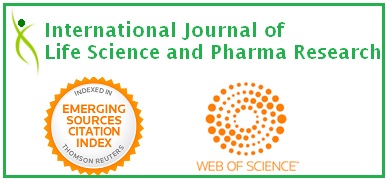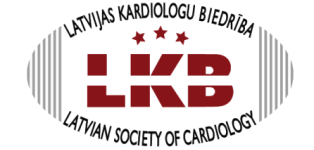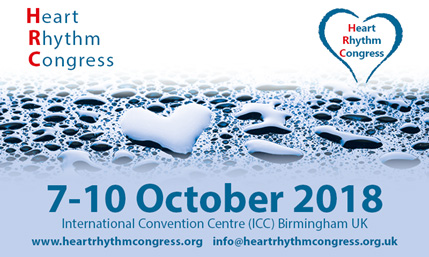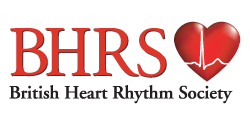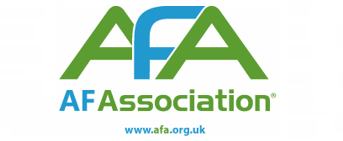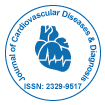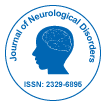Theme: Trowel the broadened impacts and front line progressions of Heart and Brain
Heart Brain 2019
Join us for 2nd World Heart and Brain Conference
Update your skills, enhance your knowledge base, and broaden your horizons- all in one place!
Date: December 02-03, 2019
Venue: Rome, Italy
World Heart and Brain conference is a unique meeting that unites cardiologists and neurologists in order to pursue a holistic approach to understanding the connection between the heart and the brain. As a leader in the emerging multidisciplinary field of neuroradiology, Heart Brain 2019 has set the standard in the rapidly growing field of integrated medicine that encourages a broad spectrum of knowledge for improved practice and patient care.
We are organizes a series of conference over 1000+ Global Events inclusive of 300+ Conferences, 500+ Upcoming and Previous Symposiums and Workshops in USA, Europe & Asia with support from 1000 more scientific societies and publishes 700+ Open access journals which contains over 30000 eminent personalities, reputed scientists as editorial board members. World-renowned speakers, the most recent methods, advances, and the newest updates in neurology are hallmarks of this conference.
Why to attend?
With members around the world focused on learning and getting answers from Cardiology & Neurology, this is your best chance of getting to the largest assembly of participants in the Cardiology & Neurology field. It gives exposure to on-going studies in cardiology and neuroscience. Provide opportunities for companies to present their products and organize face-to-face meetings with researchers who increase their business opportunities. It also gives companies information about their competitors. Presentations, dissemination of information, meeting with current and potential researchers, attracting new therapies and care, and recognition of this three-day event. Generally respected speakers, the latest frameworks, methods, and latest updates in the Cardiology and Neurology field are a testament to this conference. This World Cardiovascular Conference, or rather all the meetings of Cardiology and Neurology, cardiology and neurological events, and the Congress of Cardiologists will help organize the framework, B2B, between experts and academics.
Target Audience:
Neurologists and Cardiologists
Non-Invasive Cardiologist
Invasive Cardiologist
Autonomic Neurologists
Hematologists/Heamatologists
Behavioral Neurologists
Hematopathologists/Heamatopathologists
Interventional Cardiologist
Cardiac Surgeon
Neuro Surgeon
Neuropsychologists
Electrophysiology Cardiologist
General Cardiologist
Interventional Cardiologist
Cardiothoracic Surgeon
Pediatric Cardiologist
pediatric Neurologist
Scientists
Neurology Researchers
Cardiology Researchers
Cardiac Nurse
Cardiac Physiologist
Heart Failure Cardiologist
Paediatric Cardiologist
Transplant Cardiologist
Vascular Medicine Specialist
Congenital Cardiologist
Echocardiologist
Geriatric psychiatrist
Geropsychologist
Imaging Cardiologist
Neuroimaging specialist
Cardiology Students
Neuroscience Professors,
Cardiology Faculty,
AD Doctors (Alzheimer’s disease)
Medical Colleges,
Pharmaceutical company,
Research scholars,
Diagnostics companies
Cardiology Associations and Societies
Business Entrepreneurs
Training Institutes
Software making associations
Manufacturing Medical Devices Companies and Data Management
Conference Sponsor and Exhibitor Opportunities
The Conference offers the opportunity to become a conference sponsor or exhibitor.
Highlights of latest advances on Heart Brain 2019
Track 1: Heart-Brain
The heart is one of the most significant organs in the human body, because it is one of the leading ways for connecting us to each other and the Life. Major role of the heart is to pump blood to all the systems of the body. The brain is one of the greatest complex and superlative organs in the human body. The heart-brain connection is dominant, with each strongly reliant on the other. A stroke is related to a heart attack, but it affects the brain. A heart attack happens when blood suddenly can't get through to a part of your heart.
Track 2: Heart Disease and Brain Health
According to researchers, they have examined the evidence on factors that affect our blood vessels and heart health and shown that they also affect brain health. Heart is the foremost cause of death in America. Stroke ranks fifth, and it is also a leading cause of severe, long-term disability. Vascular—blood vessel—problems include atherosclerosis and arteriosclerosis. Both are well-known contributors to heart disease. These same systems can also harm brain function by interfering with the stable supply of oxygen-rich blood that sustains brain cells. A healthy brain, maintained by sufficient blood flow, is essential for living a longer and fuller life. Brain health allows thought, prearranged action and emotional influences that influence the daily lives and growth of individuals, families and societies.
Track 3: Heart & Brain Disorders
Heart disease defines a variety of disorders that affect your heart. Diseases below the heart disease umbrella include blood vessel diseases, such as coronary artery disease; heart rhythm problems (arrhythmias); and heart defects you're born with (congenital heart defects), among others. Brain disorders are of diverse types. Contaminations, injury, stroke, seizures, and tumors are a portion of the significant classes of cerebrum ailments.
Track 4: Clinical Cardiology & Neurology
Cardiology is a branch of medicine dealing with conditions of the heart both human and animal. The field includes medical diagnosis and treatment of congenital heart defects, coronary artery disease, heart failure, valvular heart disease and electrophysiology. Heart mechanism as a pump that impulses blood to the organs, tissues, and cells of your body. Blood delivers oxygen and nutrients to every cell and removes the carbon dioxide and waste products made by those cells. Blood is distributed from heart to the rest of the body through a complex network of arteries, arterioles, and capillaries. Blood is returned to your heart through venules and veins. The one-way system carries blood to all parts of body. This process of blood flow within body is called circulation.
The branch of biology which deals with the study of disorders of nervous system is called as neurology. Basically it deals with the diagnosis and treatment of all categories of situations and disease including the peripheral and central nervous system including their coverings, blood vessels, and all effector tissue, such as muscle. Nervous system includes CNS, ANS, and PNS. CNS involves spinal cord and brain. It also includes neurophysiology. Many neurologists may have additional training or interest in some specified sections of Neuroscience that includes epilepsy, stroke, neuromuscular disorders, and movement disorders, Sleep medicine and pain management.
Track 5: Neurocardiology
The term “neurocardiology” denotes to physiologic, neuroanatomical and pathophysiological interactions of the nervous and cardiovascular systems. The effects of stress on the heart are studied in terms of the heart's interactions with both the peripheral nervous system and the central nervous system. It is an emerging field in medicine over the last decade. The constant communication between the heart and the brain has proved invaluable to interdisciplinary fields of neurological and cardiac diseases. The neural rhythms deliver information on static state conditions of healthy individuals. Variations in the neural rhythms provide evidence that a problem is present regarding physiologic regulation and help physicians determine the underlying condition quicker based on the given symptoms.
Track 6: Biomarkers in Heart and Brain Diseases
Biomarkers can be characteristic biological properties or molecules that can be detected and measured in parts of the body like the blood or tissue. They may indicate either normal or diseased processes in the body. Biomarkers can be specific cells, molecules, or genes, gene products, enzymes, or hormones. A biomarker is a biological characteristic that is objectively measured and evaluated as an indicator of normal biological or pathological processes, or a response to a therapeutic intervention. Examples include patterns of gene expression, levels of a particular protein in body fluids, or changes in electrical activity in the brain.
Track 7: Atherosclerosis and Blood Clot
Atherosclerosis is often referred to as “hardening of the arteries.” The word comes from the Greek words athero (meaning gruel or paste) and sclerosis (hardness). It’s the process in which deposits of fatty substances, cholesterol, cellular waste products, calcium and other substances build up in the inner lining of an artery. This build up is called plaque.
Atherosclerosis is a slow, complex disease that typically starts in childhood and often progresses when people grow older. This disease progresses rapidly in some people in their 20s. In others, it doesn’t become a threat until they’ve reached their 50s or 60
There are two types of ischemic stroke caused by blood clots, narrowing of atherothrombotic blood vessels to the brain caused by atherosclerosis or other particles. The first type is called atherothrombotic stroke is the most common stroke. It occurs when a blood clot forms on a atherosclerotic plaque within a blood vessel in the brain and blocks blood flow to that part of the brain.
The second type is called cerebral embolism occurs when a wandering clot or some other particle, called an embolus, is carried by the bloodstream until it lodges in an artery leading to or in the brain and blocks the flow of blood. The embolism could be due to a piece of clot or plaque that broke off from an atherosclerotic plaque. However, most embolic strokes are due to blood clots that form in persons with atrial fibrillation and enter the bloodstream.
Track 8: Drugs by their effect on Heart and Brain
The study of how drugs work in the body (sometimes referred to as 'drug actions'). To understand this we need to consider what a drug is, how it affects our physical, emotional and psychological wellbeing, the type of drug being used, and the modes of administration, how the drug is absorbed and the characteristics of the person taking the drug.
Track 9: Cardiac tumors and Brain tumors
Cardiovascular tumors are strange developments in the heart or heart valves. There are numerous kinds of cardiovascular tumors. Be that as it may, cardiovascular tumors, when all is said in done, are uncommon. The tumors can be destructive (harmful) or noncancerous (considerate). Tumors that start developing in the heart and remain there are called essential tumors. Tumors that begin in another piece of the body and move to the heart (metastasize) are called optional tumors. Most cardiovascular tumors are kind hearted. In any case, even kind hearted tumors can cause issues as a result of their size and area. At times, little bits of tumor fall into the circulation system and are conveyed to far off veins and hinder blood stream to indispensable organs (embolism).
As people, they likewise understand the passionate toll a brain tumor determination can have on a patient and his or her family. The lion's share of mind tumors has variations from the norm of qualities engaged with cell cycle control, causing uncontrolled cell development. These variations from the norm are caused by modifications specifically in the qualities, or by chromosome revisions which change the capacity of a gene. Research has been examining guardians of youngsters with cerebrum tumors and their past presentation to specific synthetics. A few synthetic substances may change the structure of a quality that shields the body from infections and tumor. Specialists in oil refining, elastic assembling and scientists have a higher frequency of specific sorts of tumors. Which, assuming any, substance poison is identified with this expansion in tumors is obscure.
Track 10: Cardiac & Neuroscience Nursing
Cardiac nursing is extraordinary nursing field which works with patients who suffer from diverse situations of the cardiovascular system. Cardiac nurses help treat and care disorders such as unstable angina, cardiomyopathy, coronary artery disease, congestive heart failure, infarction of myocardium and cardiac arrhythmia under the direction of a cardiologist.
Mostly the Neuroscience nursing professionals assists patients with nervous system and brain disorders. Now a days nursing is a very challenging specialty that deals with assessment and management of many neurological disorders. Some of their responsibilities include administering medication, monitoring neurological exams, consulting physicians on patient progress etc. Mainly the nurses deliver patient care for Neurological problems like trauma, stroke, brain injuries, headaches, seizures, infections and aneurysms etc.
Track 11: Hypertension & Obesity
Hypertension, also known as high blood pressure (BPH), is a long-term medical disorder in which arterial pressure is steadily elevated in the arteries. RAP is a common disorder in which the long-term strength of blood against the walls of the arteries is high enough to eventually cause health problems, such as heart disease. Arterial hypertension usually progresses for many years, and affects just about everyone afterwards. High blood pressure usually has no symptoms, but it can cause serious problems such as stroke, heart failure, heart attack and kidney failure. You can control high blood pressure by adopting healthy lifestyle habits such as exercise and DASH diet and taking medication if necessary.
Obesity is a condition where a person has accumulated so much body fat that it could have a negative effect on their health. Hypertension refers to the pressure exerted by the blood on the inner walls of the arteries. Obesity increases the risk of cardiovascular disease. The individual session in this area focuses on obesity, its interaction with the outcomes of hypertension, risk factors, treatment and management of cardiovascular disease. Arterial hypertension related with obesity is categorized by activation of the sympathetic system, initiation of the renin-angiotensin system and retention of sodium, among various abnormalities.
Track 12: Heart stents and Brain stents
A good way to think about a stent is like a retaining wall inside an artery. While stents are not solid like an actual wall, they do what walls do by protecting an inner space from invaders or from being squeezed shut. Stents are tubes made of wire mesh that is capable of expansion. The mesh is made of nitinol, a blend of nickel and titanium. When it is first inserted into a patient’s artery, the stent is packed within a wrapper. Stents are small tubes that range in diameter from about soda straw size into brain arteries to keep the blood flow strong.
Track 13: Neurohormones and Heart Failure
Neurohormones are an assortment of many chemical messengers of cardiac and extra cardiac origin that are found at high circulating levels in adults with chronic heart failure (CHF). Neurohormonal systems are normally stimulated under conditions of acute volume depletion, activated by cardiac output and blood pressure. However, prolonged and chronic activation of these systems may result in progressive ventricular remodeling and worsening of heart failure, as occurs in congestive heart failure (CHF).
Track 14: Pediatric Cardiology & Neurology
The branch of Pediatric Cardiology is accountable for the analysis of congenital heart defects, performing diagnostic procedures such as echocardiograms, cardiac catheterizations, and electrophysiology studies, and for the on-going supervision of the sequel of heart disease in infants, children and adolescents.
The branch of nervous system which deals with the study of the cure, diagnosis, or mitigation of the children or kids called as pediatric neurology. It involves pediatric neurosurgery, pediatric neuropathy, pediatric neuroimaging etc.
Track 15: Stroke and Aortic Dissection
A stroke arises when the supply of blood to the brain is either interrupted or reduced. When this happens, the brain does not get enough oxygen or nutrients, and brain cells start to die. On the basis of stoke, 25% of all ischemic strokes are cardioembolic strokes, and the source of emboli and clots are formed in the heart, dislodged in the heart and then travel to the brain. Of the 25% of ischemic strokes, 45% of those are due to atrial fibrillation. The 3rd leading source of death after cancer and heart disease is Stroke, so focusing on the epidemiology of stroke and risk factors. Stroke can be of different types. Aortic dissection arises when an injury to the innermost layer of the aorta permits blood to flow between the layers of the aortic wall, forcing the layers apart and aortic dissection is a serious condition in which there is a tear in the wall of the major artery carrying blood out of the heart (aorta).
Track 16: Epidemiology
Epidemiology is the process that is used to find the causes of health consequences and diseases in people. In epidemiology, the patient is the community and individuals are observed mutually. It is also the application of this study to the control of healthiness. The most important feature of epidemiology is the measurement of disease consequences in relation to a population at risk. The population at risk is the group of people, healthy or sick, who would be counted as cases if they had the disease being studied
Track 17: Clinical Case Reports
A case report is a detailed report of the symptoms, signs, diagnosis, treatment, and follow-up of a specific patient. Clinical case reports can also play an important role in medical education, providing a structure for case-based learning and may also have a role to play in guiding the personalization of treatments in clinical practice. This session includes detailed study of Neuroscience and Cardiology case reports based on diagnosis, therapy, medication and research. The case report includes-Diagnostic case reports, Therapy based case reports, Medication based case reports, and Research based case reports.
Track 18: Brain & Cardiac Anaesthesiology
Anaesthesia plays a crucial role in many surgical procedures, and it therefore has an enormous impact on human health. It is a drug-induced, reversible state characterized by unconsciousness, anti-nociception or analgesia, immobility and amnesia. On rare occasions, however, the patient can remain unconscious longer than intended, or may regain awareness during surgery. There are no precise measures for maintaining the correct dose of anaesthetic, and there is currently no fully reliable instrument to monitor depth of anaesthesia. Although a number of devices for monitoring brain function or sympathetic output are commercially available, the anaesthetist also relies on clinical assessment and experience to judge anaesthetic depth. The undesirable consequences of overdose or unintended awareness might in principle be ameliorated by improved control if we could understand better the changes in function that occur during anaesthesia, in particular the dynamical brain states, the dynamics of cardiovascular oscillations and their mutual interactions
Track 19: Neuroradiology and cardiac radiology
Radiology is a medical specialty that uses imaging to diagnose and treat diseases seen within the body. Radiologists use a variety of imaging techniques such as X-ray, ultrasound, computed tomography (CT), nuclear medicine including positron emission tomography (PET), and magnetic resonance imaging (MRI) to diagnose and/or treat diseases. Interventional radiology is the performance of (usually minimally invasive) medical procedures with the guidance of imaging technologies.
Related Conferences
- Bipolar Disorder: Psychiatry and Mental Health, November 8-10, 2018 Abu Dhabi, UAE
- 30th Psychiatry and Mental Health, November 12-13, 2018 Dubai, UAE
- 11th Anesthesiology and Critical Care, November 15-16, 2018 Dubai, UAE
- World Brain Congress, December 5-7, 2018 Dubai
- 26th Psychiatric Disorders & Psychosomatic Medicine, December 5-6, 2018 Dubai, UAE
- 4th Global Summit on Heart Diseases, March 15-16, 2019 Singapore
- 20th Nutrition, Food Science and Technology Conferences, April 08-09, 2019 Abu Dhabi, UAE
- 25th International Conference on Cardiovascular and Thoracic Surgery, March 27-28, 2019 Sydney, Australia
- 28th International Conference on Clinical & Experimental Cardiology Research, April 17-18, 2019 Montreal, Canada
- 5th Hypertension & Healthcare, June 10-11, 2019 Helsinki, Finland
- World Heart and Brain Congress, April 19-20, 2019 Chicago, USA
- 28th Cardiology and Healthcare, June 10-11, 2019 Helsinki, Finland
- 6th Global Experts Meeting on Cardiovascular Pharmacology, July 12-13, 2019Yokohama, Japan
- 29th Public Mental Health and Neuroscience, September 23-24, 2019 Abu Dhabi, UAE
- 25th Neurochemistry and Neuropharmacology, October 28-29, 2019 Abu Dhabi, UAE
Related Societies:
USA: American Heart Association Dallas, USA, North America; American Society of Hypertension, American Academy of Neurology, American Neurological Association, Child Neurology Society, American Academy of Clinical Neurophysiology (AACN), American Association of Heart Failure Nurses, American Cardiology Association, American Society of Echocardiography, American Society of Nuclear Cardiology, American Stroke Association, American Heart Association, Congenital Cardiac Anaesthesia Society, Primary Care Diabetes Society, Northwest Association of Cardiovascular and Pulmonary Rehabilitation, Pulmonary Hypertension Association, Heart and Stroke Foundation of Canada, American Society of Neuroimaging(ASN), American Association of Neuroscience Nurses (AANN); The Neurodiagnostic Society; American Neurological Association;
Europe: Austrian Heart Foundation, British Cardiovascular Society, British Heart Foundation, Irish Nurses Cardiovascular Association, European Neurological Society (ENS), European Stroke Organisation, Albanian Society of Cardiology, European Society for Pediatric Neurosurgery (ESPN), Belorussian Scientific Society of Cardiologists, British Association of Nursing in Cardiovascular Care, Heart Foundation of Botswana, Belgian Society of Pediatric Neurology (BSPN), Ataxia UK - Neurological Disorder, Cardiology Society of Serbia, Acoustic Neuroma Association of Australasia (ANAA), Stroke and Vascular Medicine, Estonian Society of Cardiology, Georgian Society of Cardiology, Irish Heart Foundation, European Association of Neurosurgical Societies (EANS), Luxembourg Society of Cardiology, Society of British Neurological Surgeons (SBNS), Spanish Neurological Society, Norwegian Society of Cardiology, Saudi Heart Association, Neurological Council of Western Australia (NCWA), Portuguese Society of Hypertension, Slovenian Society of Cardiology, British Society for Neuroendocrinology (BSN), Swedish Society of Cardiology, Zurich Heart House.
Middle-East: HeartCry Missionary Society; Algerian Society of Hypertension, Emirates Neurology Society, Iranian Heart Foundation Iran ; Armenian Cardiologists Association; Emirates Cardiac Society, Scandinavian Neurosurgical Society (SNS).
Asia-Pacific: Asian Pacific Society for Neurochemistry, Turkish Society of Hypertension and Atherosclerosis, Cameroon Heart Foundation, High Blood Pressure Research Council of Australia, Association of Pediatric Cardiology, Asia-Pacific Stroke Organisation, Philippine Neurological Association joint congress, Malaysian Society of Hypertension, Cardiometabolic Heart Congress, Chinese Society of Cardiology, Philippine Neurological Association (PNA), The Heart Association of Thailand, International Society for Pediatric Neurosurgery (ISPN), World Heart Federation.
Top five drivers of cardiovascular market growth
The 2nd World Heart and Brain Conference (Heart and Brain 2019) is a unique meeting that unites cardiologists and neurologists in order to pursue a holistic approach to understanding the connection between the heart and the brain This conference will bring together cardiologists and neurologists, Scientist, Cardiology Researchers, Neuroscience Professors, students, business professionals to discuss about Heart and Brain, Cardiology, Basic Science, Aortic and Carotid Dissection and Stroke, Diabetes and the Heart, Biomarkers, Cognition & the Heart, Epidemiology, Heart Failure, Stress - Effect on the Heart and Brain, Non-Invasive Cardiac Imaging and so on, under a solitary rooftop for a brief, yet an intense period of time for their sharing of knowledge amongst themselves. Join us at the May 30-31, 2019 at Istanbul, Turkey in the Beautiful city of Istanbul, Turkey where the winds of change will help us create more interrelated and important vision of medicine and human health.
Scope and importance:
“Neuro-cardiology” denotes to physiologic, neuroanatomical and pathophysiological interactions of the nervous and cardiovascular systems. The gathering will cover a diversity of themes including subspecialties, for example, Imaging echocardiography) intercession, intense coronary disorders, arrhythmias and also avoidance, and heart disappointment. This conference that bonds cardiologists and neurologists in direction to chase a holistic approach to understanding the linking between the heart and the brain. As an actor in the developing multidisciplinary field of neuro-cardiology. Physicians who specialize in this field of medicine are called cardiologists and neurologists, a specialty of internal medicine. Our definitive objective is to prevent strokes and mainly recurring strokes. Heart Brain 2018 accelerates a more motivated discussion than at a general cardiology conference or Stroke conference, and has set the standard in the rapidly growing field of integrated medicine that encourages a wide field of information for enhanced practice and patient care.
Conference Highlights:
- Heart-Brain
- Heart Disease and Brain Health
- Heart & Brain Disorders
- Biomarkers in Heart and Brain Diseases
- Atherosclerosis and Blood Clot
- Cardiothoracic surgery and neurosurgery
- Cardiac tumors and Brain Tumors
- Brain & Cardiac Anaesthesiology
- Drugs by their effect on Heart and Brain
- Clinical Cardiology
- Hypertension & Obesity
- Cardiac & Neuroscience Nursing
- Neurocardiology
- Neurohormones and Heart Failure
- Pediatric Cardiology & Neurology
- Echocardiography & Neuroimaging
- Heart stents and Brain stents
- Neuro-Oncology and Brain Tumour
- Stroke and Aortic Dissection
- Epidemiology/Prevention
- Imaging of the Nervous System of the Heart
- Nuclear Cardiology
- Clinical Case studies/Performance Improvement Initiatives
- Neuroradiology and cardiac radiology
Why to attend???
With members from around the world motivated on learning about Heart and Brain, this is your single best prospect to reach the largest gathering of participants from the hospitals, Universities, community, etc. This Conference will conduct demonstrations, dispense information, meet with current and potential scientists and receive name acknowledgment at this 2-day event. World-renowned speakers, the most current methods, tactics, and the newest updates in Cardiology and Neurology field are trademarks of this conference.
Hospitals Associated with Cardiology and Neurology Research:
Finland Hospitals:
Kymenlaakso Central Hospital, Kotka
South Karelia Central Hospital, Lappeenranta
Päijänne Tavastia Central Hospital, Lahti
Central Hospital of Tavastia, Hämeenlinna
Satakunta Central Hospital, Pori
Vaasa Central Hospital, Vaasa
Southern Ostrobothnia Central Hospital, Seinäjoki
Central Hospital of Keski-Pohjanmaa, Kokkola
Central Finland Central Hospital, Jyväskylä
Mikkeli Central Hospital, Mikkeli
Central Hospital of Savonlinna, Savonlinna
North Karelia Central Hospital, Joensuu
Lapland Central Hospital, Rovaniemi
Central Hospital of Kainuu, Kajaani
Åland Central Hospital, Mariehamn, Åland
Central Hospital of Länsi-Pohja, Kemi
Few Statistics of Medical Doctors:
- Europe = Approx. 105,250 medical doctors
- Finaland= Approx. 5,332 medical doctors
Societies Associated with Cardiology and Neurology Research:
- Finnish Cardiology Society
- Association of Cardiovascular Nursing & Allied Professions
- Acute Cardiovascular Care Association
- Asian Pacific Society of Cardiology
- Pan Arab Congenital Heart Disease Association
- Gulf Heart Rhythm Society
- Saudi Heart Rhythm Society
- World Society for Pediatric and Congenital Heart Surgery
- The Emirates Neurological Society (EMINS)
World Wide:
- The American Heart Association
- International Society for Heart Research (ISHR)
- International Brain Barriers Society(IBBS)
- American Neurological Association
- American Association of Heart Failure Nurses (AAHFN)
- Heart Valve Society of America (HVSA)
- Heart Failure Society of America
- Society for Neuroscience
- European Society of Cardiology
- Federation of European Neuroscience Societies
- Al Jalila Foundation
- Heart & Vascular Institute (Cleveland Clinic)
- Neurological Society of India.
World Wide:
- Harvard University
- Cornell University
- Yale University
- University of Texas South-western medical center
- University of Michigan
- University of Washington
- Harvard University
- Vanderbilt University
- University of Rochester
- University of Alabama-Birmingham
- Emory University
- Northwestern University
- Vanderbilt University
Conference Highlights
- Heart-Brain
- Heart Disease and Brain Health
- Heart & Brain Disorders
- Biomarkers in Heart and Brain Diseases
- Atherosclerosis and Blood Clot
- Cardiac tumors and Brain Tumors
- Brain & Cardiac Anaesthesiology
- Drugs by their effect on Heart and Brain
- Clinical Cardiology & Neurology
- Hypertension & Obesity
- Cardiac & Neuroscience Nursing
- Neurocardiology
- Neurohormones and Heart Failure
- Pediatric Cardiology & Neurology
- Echocardiography & Neuroimaging
- Neuro-Oncology and Brain Tumour
- Stroke and Aortic Dissection
- Epidemiology/ Prevention
- Case studies/Performance Improvement Initiatives
- Neuroradiology and cardiac radiology
- Heart stents and Brain stents
To share your views and research, please click here to register for the Conference.
To Collaborate Scientific Professionals around the World
| Conference Date | December 02-03, 2019 | ||
| Sponsors & Exhibitors |
|
||
| Speaker Opportunity Closed | |||
| Poster Opportunity Closed | Click Here to View | ||
Useful Links
Special Issues
All accepted abstracts will be published in respective Our International Journals.
- Journal of Clinical & Experimental Cardiology
- International Journal of Cardiovascular Research
- Journal of Cardiovascular Diseases & Diagnosis
Abstracts will be provided with Digital Object Identifier by



